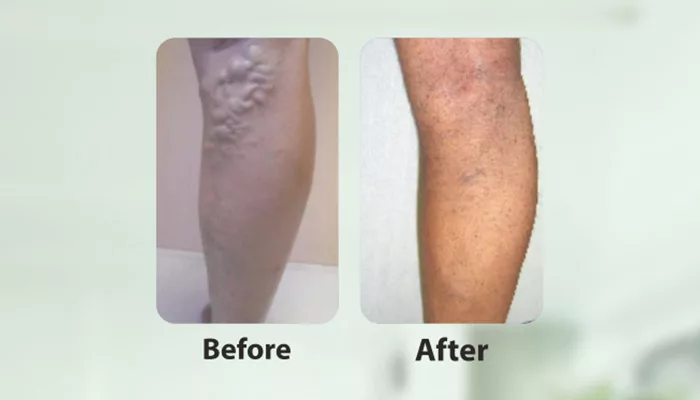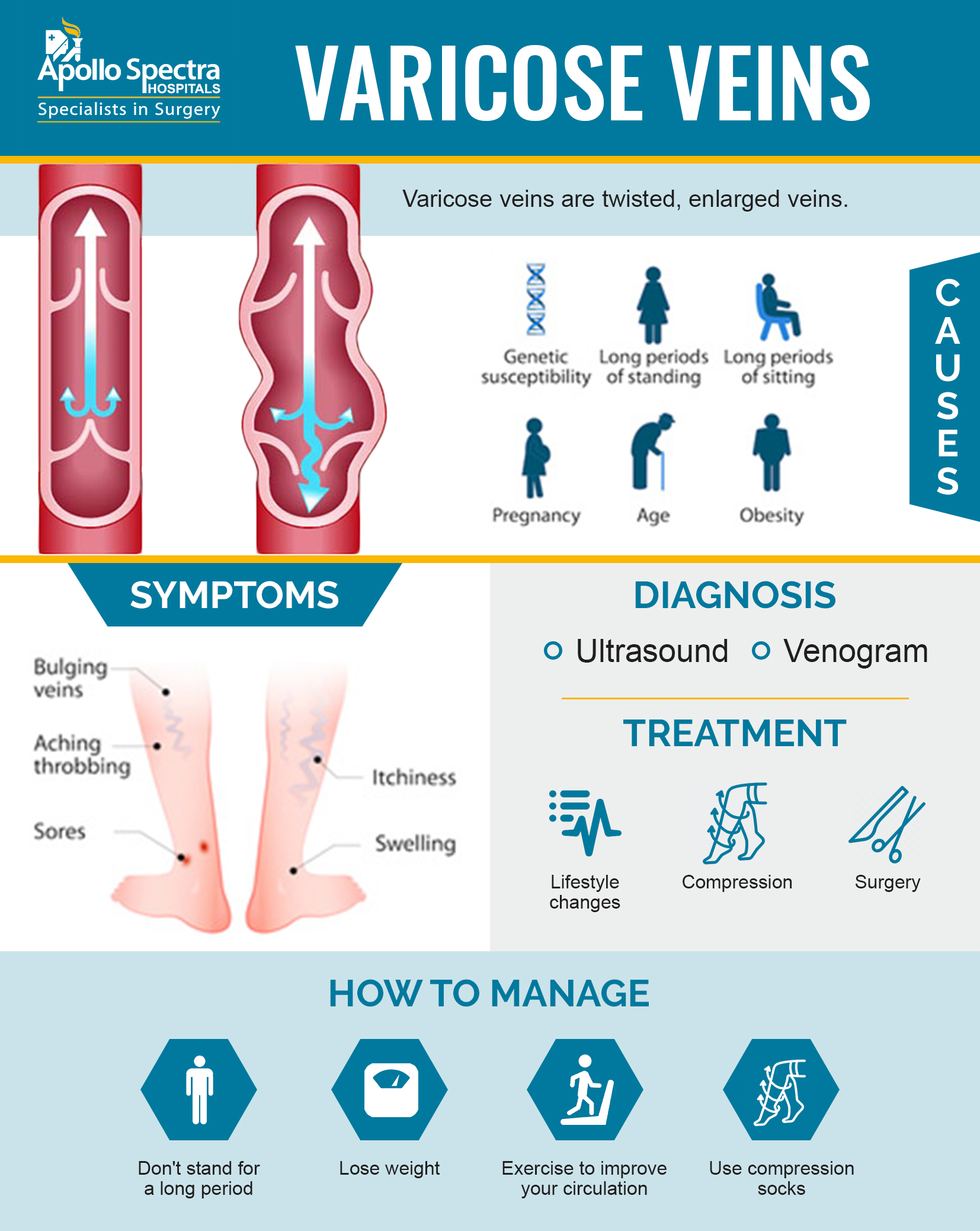Varicose veins: Causes, treatment, diagnosis, and prevention
January 19, 2023
Varicose veins are twisted and swollen veins that appear on the legs. It is a common problem, with over 30 percent of the adults are estimated to suffer from this disease. If you have varicose veins, you may not like the way they look. More than just embarrassment, it can also cause pain and uneasiness. You should consider undergoing varicose veins treatments if the problem is getting out of hand. Usually, varicose veins are nothing but a cosmetic problem. However, in some cases, they are known to cause symptoms such as pain, itchy skin, leg cramps, and swelling in the feet and ankles.
The treatment is dependent on how severe the problem is. It also depends on where it originates- the main vein trunk (saphenous vein) or the veins branching off the main trunk. When varicose veins cause extreme discomfort and heaving, it is generally because of an abnormality in the trunk and its branches as well.

Why do they occur?
Varicose veins mainly develop when the veins in the legs are weakened, causing it to gradually become twisted and swell. The malfunctioning of one-way vein valves causes the problem. These valves are meant for preventing backward flow of blood in the veins, thus facilitating flow of blood to the heart. However, if the valves become faulty or fail for some reason, pooling of blood occurs. This results in increased pressure on the vein walls, thus stretching and weakening them.
Varicose veins Symptoms
While varicose veins are visible on the skin itself, you may not feel the need to treat it. However, if you experience the following varicose veins symptoms, you should consider a treatment option.
- Pain, heaviness or discomfort
- Leg cramps
- Swelling of the legs
- Itching around the ankles or legs
- Burning sensation
- Changes in the skin, like change in skin color or thickening of the skin.
More commonly, people treat varicose veins because of cosmetic reasons. Although, there are some actual medical reasons to seek a treatment if you are suffering from varicose veins. It is recommended that you visit specialist if you experience complications like:
- Chronic sore or leg ulcer
- Clotting of the blood, be it deep vein thrombosis or thrombophlebitis
- Excessive bleeding from the varicose veins
Varicose veins Diagnosis
When you visit your doctor, he or she will diagnose the varicose veins by performing a physical exam. To diagnose swelling, the doctor will look at your legs when you are standing. If there is any ache or pain in your legs, you should describe it as well.
An ultrasound test may also be required to see if there are any signs of blood clotting. It also helps in checking whether the veins are properly functional or not. This non-invasive test is performed by a small device known as transducer. When it is run against the skin, it transmits the image of the veins to a monitor. This allows the doctor to diagnose the problem accordingly.
Varicose veins Treatment options available
Treating varicose veins doesn’t require you to stay in the hospital or undergo a long and uncomfortable recovery. Fortunately, there are less invasive procedures to treat the problem. As far as varicose veins treatment options are concerned, you can consider the following:
- Compression stockings: Most people try to manage the symptoms of varicose veins by wearing special stockings known as compression stockings. It is usually the first option people try before moving to other treatment options. These stockings squeeze the legs steadily, helping leg muscles and veins to be more efficient in transporting blood. You should consider other procedures if compression stockings do not relieve the symptoms.
- Surgical treatment: For a lot of years, surgery was considered as the only option for people who suffered from varicose veins. This involves an incision, where the varicose veins are found and litigated or tied off. The veins closer to the surface of the skin is stripped or removed. You must note that these vein surgeries are associated with risks like pain, scarring, infection, bleeding and clotting.
- Minimally invasive Options: With the invasive nature of surgeries and the risk associated with it, you should consider other minimally invasive techniques. These include:
- Sclerotherapy: This is a painless procedure that involves injection of scarring or sclerosing agent into the vein. It causes the vein to collapse and then be reabsorbed back to the bloodstream. Sclerotherapy is advisable for small varicose veins and is not typically suited for large and extensive varicose veins.
- Endovenous ablation: In this procedure, a thin tube or catheter is used, and heat from radiofrequency waves or laser fiber is generated and applied to varicose vein.
Over 30% of Adults Suffer from Varicose Veins - Learn How to Treat this Common Problem
NOTICE BOARD
CONTACT US
CONTACT US
 Book Appointment
Book Appointment


.svg)
.svg)
.svg)
.svg)








